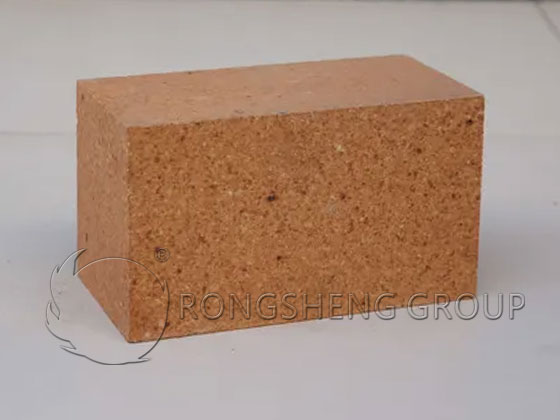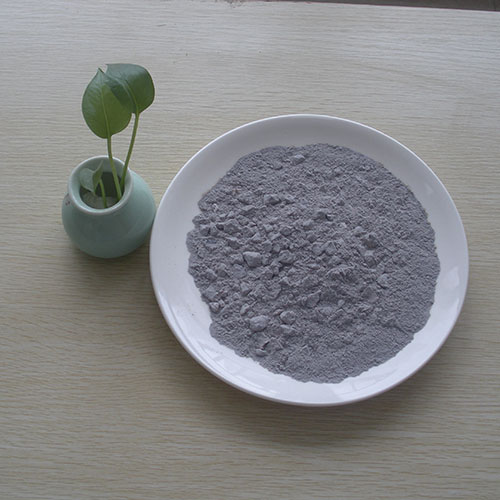Refractory Configuration and Optimization for a 5000t/d Clinker Line (2)
Refractory materials are developing towards environmental friendliness, strong adaptability, and long service life. Rongsheng Refractory Materials Factory supplies refractory materials for kilns used in 5,000 t/d clinker production lines. Rongsheng Refractory Materials Manufacturer leverages its innovative capabilities in refractory castables while focusing on customer needs, aiming to provide high-quality, long-life refractory lining materials for high-temperature industrial furnaces. Contact Rongsheng for free solutions.
Refractory Lining Configuration for a 5,000 t/d Cement Clinker Production Line
This article focuses on the refractory configuration for a 5,000 t/d cement clinker production line. The cement firing system involves a complex chemical process from raw meal to clinker, going through stages such as preheating in the preheater, decomposition in the calciner, high-temperature calcination, and cooling. The refractory materials used in each stage must be adapted to this process.
(3) Kiln Head Hood
The kiln head hood connects the rotary kiln to the cooler and serves as the inlet for kiln air and tertiary air. Air pressure is extremely unstable, making positive pressure a common feature of the entire kiln system. Gas temperatures range from 800-1300°C, with significant temperature fluctuations. Furthermore, the impact of clinker particles is intense, making the top and inlet areas susceptible to damage. Therefore, thermal shock resistance and wear resistance should be considered when selecting materials.
- High-Alumina High-Strength Wear-Resistant Castable
Amount: 180 tons
Technical Performance:
Application Location: Round top
- Calcium Silicate Board
Amount: 7.2 tons
Technical Performance: See above
Application Location: All refractory linings
(4) Burner
Because the burner is located in the high-temperature gas between the kiln mouth and the cooler, and the pulverized coal burns near the burner head, it is significantly affected by the high-temperature radiation and reducing atmosphere. The chemical composition of coal significantly influences combustion, making the burner head plate susceptible to damage. The refractory material used in this area requires high refractoriness and wear resistance, as well as enhanced thermal shock stability and spalling resistance.
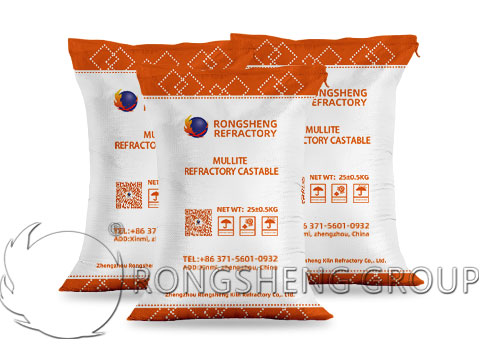
- Mullite Castable
Quantity: 5 tons
Technical Performance:
Application Area: Burner head hood where it enters the kiln
(5) Rotary Kiln
As a rotating drum that calcines raw materials into clinker at high temperatures, the lifespan of its refractory materials often determines the production cycle, making it a key and challenging aspect of refractory material management in cement plants. After preheating and approximately 90% decomposition, the raw material enters the kiln from the kiln outlet, where its temperature gradually rises to over 1450°C, completing the calcination process and entering the cooler. A 74-meter rotary kiln can be broadly divided into five thermal stages. Because the refractory materials within the rotary kiln must be fixed to the continuously rotating drum, the strength of the refractory bricks must not fall below a certain threshold due to the following factors:
- There is a certain degree of slippage or sliding tendency between the refractory bricks and the shell, generating friction. The refractory bricks must possess a certain strength to resist damage from this friction.
- A rotary kiln is not an absolutely rigid structure when viewed axially. Because the rotary kiln drum has a certain curvature between its support points, it experiences periodic bending in sync with its rotation during operation. Because the three-roller rotary kiln utilizes a statically indeterminate structure, the different expansion rates of each roller group due to temperature differences can cause deviations in the kiln shell’s coaxiality, generating significant additional loads. Furthermore, the 4% inclination of the kiln shell also generates downward stress during rotation.
- The shell is not a perfect circle in the radial direction, but rather an elliptical shape. Deformation is greatest at the wheel belts, and this deformation places additional pressure on the refractory bricks. Due to the kiln’s own weight and rotation, the kiln undergoes periodic elliptical deformation, synchronized with the rotation, placing alternating loads on the refractory bricks. When this deformation or elliptical deformation reaches a certain value, it can exceed the internal stresses in the refractory bricks, causing premature failure. Therefore, refractory materials with insufficient strength must be used in rotary kilns; they must meet basic strength requirements.
- In addition to the aforementioned mechanical stresses, the refractory materials within the kiln are also subject to the effects of high-temperature gases and liquid clinker. It can be roughly divided into five or six working zones, which require different refractory materials for laying.
Refractory Configuration for a 5,000-ton Rotary Kiln:
Usage: 15 tons
Technical Performance: See above (RT-70MC)
Applicable Area: 0-0.6 m
- High-Abrasion-Resistant Bricks
Usage: 8 tons
Technical Performance:
Applicable Area: 0.6-1.6 m
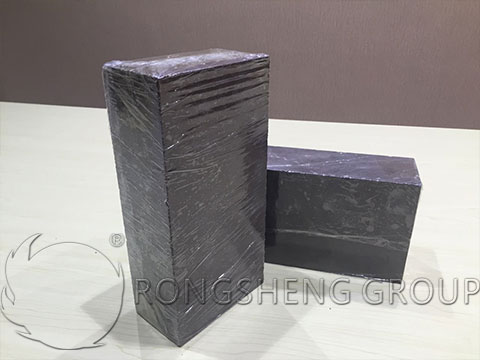
- Direct-Bonded Magnesia-Chrome Bricks
Usage: 340 tons
Technical Performance:
Applicable Area: 1.6-25 m/35-45 m
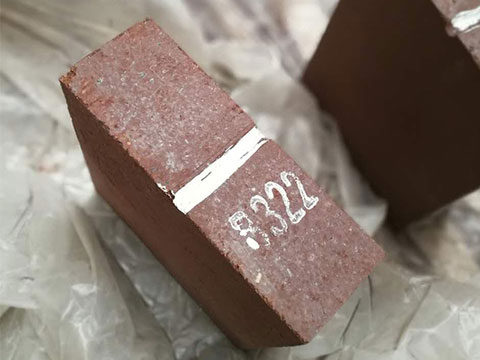
Usage: 99 tons
Applicable Area: 25-35 m
- Anti-Spalling Bricks
Usage: 242 tons
Applicable Area: 45-73.2 m
- High-Alumina Castables
Usage: 8.5 tons
Technical Performance: See above
Applicable Area: 73.2-74 m
(6) Cooler
The cooler uses air to cool the hot clinker leaving the kiln from 1400°C to below 80°C. Due to the large temperature difference between the front and rear sections, the most vulnerable parts are concentrated in the front wall and the lower wall. Furthermore, the overhanging beams at the interface with the kiln head are also susceptible to premature damage due to the erosion of high-temperature gases.
Grate coolers are stationary relative to the refractory shell, so insulation materials with low strength but low thermal conductivity can be used on the outer layer. The cooler’s inner surface must withstand thermal erosion and high-temperature abrasion caused by contact with high-temperature clinker at 300-1450°C, so the selected refractory materials must have strong wear resistance. Furthermore, the first stage cooler must also withstand high thermal loads.
Because the grate cooler has large vertical walls, the use of special anchoring refractory bricks is crucial when constructing the refractory brickwork to strengthen the connection between the bricks and the shell to prevent collapse of the vertical walls.
Currently, the most commonly used refractory castables are:
- High-strength alkali-resistant castable
Usage: 20 tons
Technical properties: See above (RT-13NL)
Application: Section 3 and top
- High-alumina castable
Usage: 106 tons
Technical properties: See above (RT-16)
Application: Section 2 and 3 side walls and parapet
- High-heat high-alumina castable
Usage: 183 tons
Application: Cooler front wall and Section 1 parapet
(To be continued…3)
